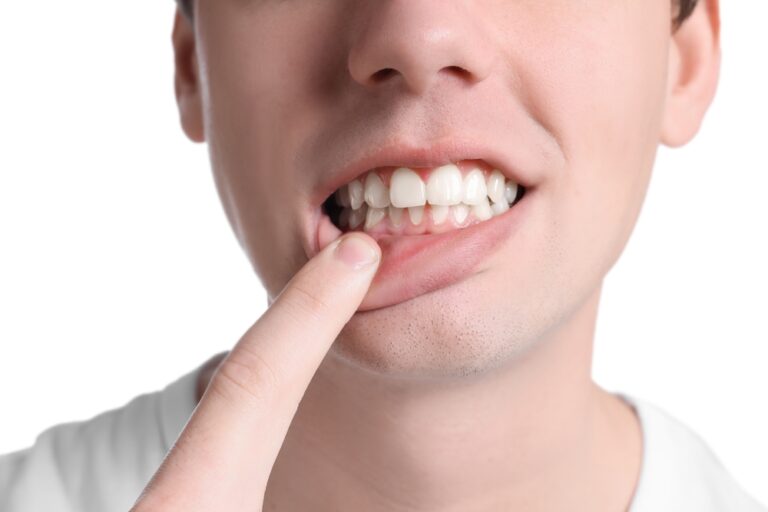Dental fillings are a common procedure to treat tooth decay. While getting a cavity filled aims to relieve tooth pain and repair damage, it’s normal to experience some discomfort afterwards as the tooth and nerves settle. This article will dive into the types of pain after a filling that are normal versus concerning, timeline for recovery, factors affecting pain levels, and how to manage symptoms.
What is a dental filling and why is pain common after?
A filling is used to restore a decayed or damaged tooth. The dentist first cleans out the decay and then fills the space with metal, porcelain, resin, or other materials to strengthen the tooth and prevent further decay.
It’s common to have some pain after a filling as the procedure can cause inflammation in the tooth’s pulp tissue and nerves. Drilling vibrations, hot or cold temperatures, and pressure on the tooth contributes to irritation. Most post-filling discomfort is temporary as the nerve heals and adjusts to the new filling over days to weeks.
Types of dental fillings
There are several types of filling materials, including:
- Composite resin – Tooth-colored plastic and glass blend. Bonds tightly to seal and reinforce the tooth. Less irritating than other fillings.
- Amalgam – Metal alloy of mercury, silver, copper, and other metals. Doesn’t bond but is durable. May cause more inflammation.
- Gold – Gold is mixed with platinum, palladium, silver and copper to make a strong, non-corroding filling. Provides a tight seal.
- Porcelain – Glass-like ceramic fused onto a metal core. Withstands heavy biting forces. Used for front visible teeth.
- Glass ionomer – Acrylic and glass blend releases fluoride. Used in low stress areas.
- Temporary fillings – Short-term fillings like zinc oxide or Cavit. Replaced later with a permanent filling.
Expected pain after a filling – timeline and symptoms

After the numbing medication wears off, it’s normal to have:
- First 24 hours – Mild to moderate throbbing, dull pain from inflammation in the inner tooth tissue. Hot/cold sensitivity is also common.
- 2 to 5 days – Discomfort starts decreasing but may spike with chewing or temperature changes. Manage with OTC pain meds.
- 1 to 2 weeks – Pain is intermittent and continues improving. Sensitivity to sweets may remain during this time.
- 2 to 4 weeks – Most patients are pain-free except for lingering temperature sensitivity, especially with large fillings.
Symptoms should steadily improve during this timeline. Constant, worsening pain after a few days indicates complications and needs dental evaluation.
Factors that influence post-filling pain

The amount and duration of pain after a filling can vary depending on:
- Size and location – Large fillings and those on chewing surfaces or near the nerve cause more discomfort.
- Material – Non-bonded metals like amalgam may irritate more than bonded composites.
- Trauma during procedure – More vibration, pressure, and drilling can increase inflammation.
- Pre-existing issues – Symptoms may be worse if the tooth already had pulpitis, gum recession, cracks, etc.
- Bite alignment – Uneven bite forces can cause prolonged soreness.
- Individual healing – Some patients experience more sensitivity than others genetically.
Warning signs to contact your dentist

See your dentist right away if pain after a filling:
- Is severe, constant, and lasts more than 3-5 days
- Spreads to your ear, jaw, or other teeth
- Keeps you awake at night or requires medication with no relief
- Is accompanied by swelling, bad taste, or bad breath
- Causes gum/jaw soreness that gets worse
- Feels like an electric shock, jolt, or throbbing
These may indicate an infection, nerve inflammation, cracked tooth, or other dental issue needing urgent treatment.
Tips to manage post-filling discomfort at home

To help control normal post-filling pain:
- Take over-the-counter pain relievers like ibuprofen regularly the first few days.
- Rinse your mouth with warm salt water 2-3 times a day to heal inflammation.
- Use desensitizing toothpaste and dental products with potassium nitrate or stannous fluoride.
- Avoid very hot or cold foods/drinks that trigger sensitivity.
- Eat soft foods and chew on the opposite side of the filling.
- Improve your oral hygiene to prevent more tooth decay and irritation.
- Apply an ice pack on your cheek to reduce facial swelling or muscle soreness.
- See your dentist if symptoms don’t steadily improve within 10-14 days.
Frequently Asked Questions
How long does the pain last after a filling?
For most people, pain or sensitivity peaks within the first few hours after the numbness wears off and gradually decreases over the next few days to weeks. It rarely lasts longer than a month.
What helps with tooth pain after a filling?
Using OTC pain medications like ibuprofen, acetaminophen, or naproxen can effectively relieve discomfort. Saltwater rinses, dental desensitizing products, ice packs, and eating soft foods can also provide relief.
Is throbbing normal after a filling?
It’s very common to have a throbbing or dull ache for the first few days after getting a filling. This is the nerve and pulp tissue recovering from irritation. It should steadily improve and doesn’t indicate a problem.
When can I eat normally after a filling?
Avoid hard, crunchy, or sticky foods for the first 24 hours. After that, you should be able to resume your normal diet as long as you chew on the opposite side. Most sensitivity resolves within 1-2 weeks.
How can I prevent pain after future fillings?
Getting fillings with minimal vibration, asking your dentist to adjust your bite, using desensitizing products, and maintaining good oral hygiene can help prevent pain with future fillings.
Conclusion
Expect mild to moderate pain and sensitivity for the first week after a new filling. This should gradually decrease over 2-4 weeks as the tooth’s nerve heals. Report any severe constant pain, swelling, or other concerning symptoms immediately to prevent complications. With proper home care and follow-up, your filled tooth should feel normal again soon.






